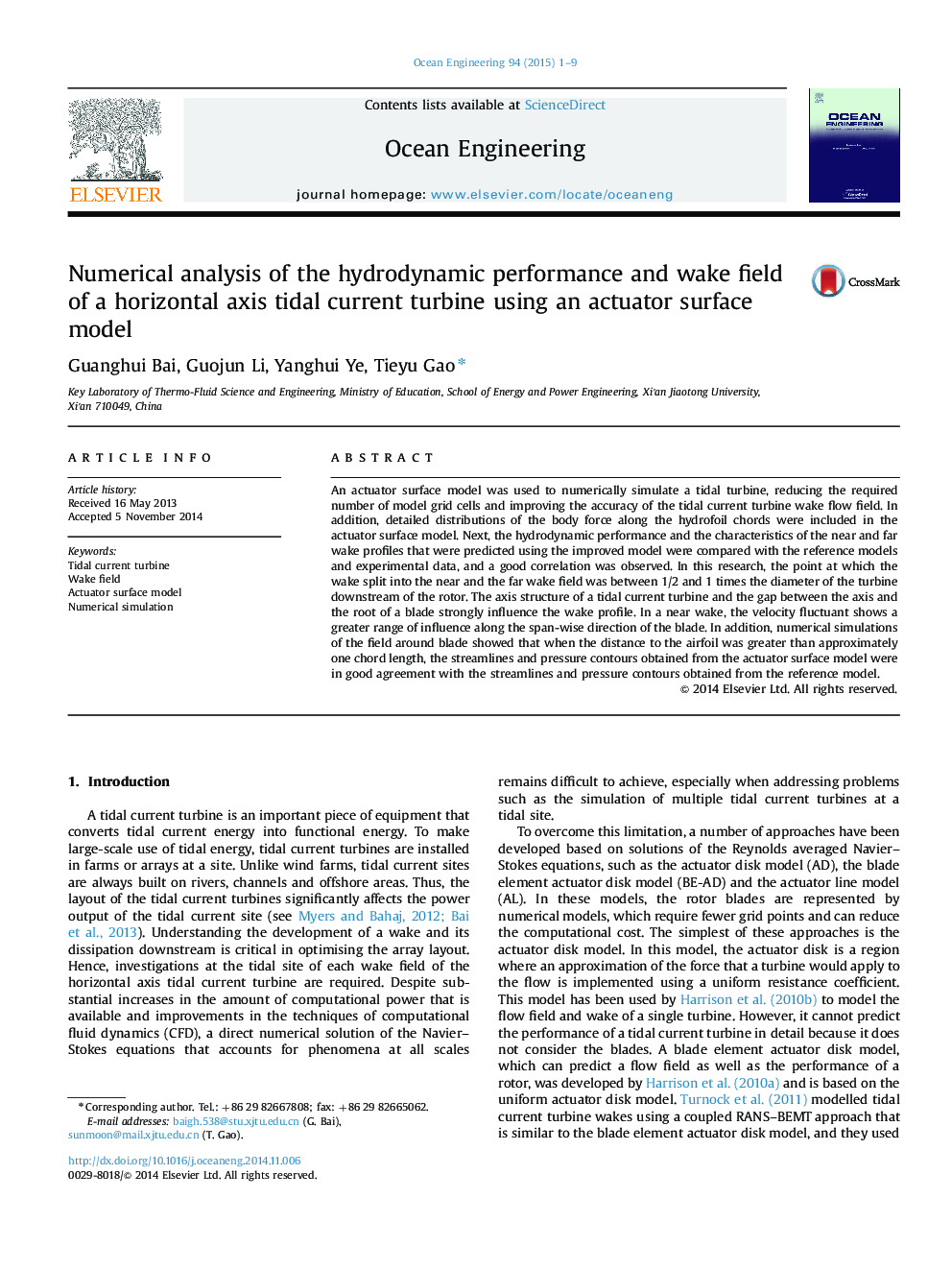| Article ID | Journal | Published Year | Pages | File Type |
|---|---|---|---|---|
| 8065912 | Ocean Engineering | 2015 | 9 Pages |
Abstract
An actuator surface model was used to numerically simulate a tidal turbine, reducing the required number of model grid cells and improving the accuracy of the tidal current turbine wake flow field. In addition, detailed distributions of the body force along the hydrofoil chords were included in the actuator surface model. Next, the hydrodynamic performance and the characteristics of the near and far wake profiles that were predicted using the improved model were compared with the reference models and experimental data, and a good correlation was observed. In this research, the point at which the wake split into the near and the far wake field was between 1/2 and 1 times the diameter of the turbine downstream of the rotor. The axis structure of a tidal current turbine and the gap between the axis and the root of a blade strongly influence the wake profile. In a near wake, the velocity fluctuant shows a greater range of influence along the span-wise direction of the blade. In addition, numerical simulations of the field around blade showed that when the distance to the airfoil was greater than approximately one chord length, the streamlines and pressure contours obtained from the actuator surface model were in good agreement with the streamlines and pressure contours obtained from the reference model.
Related Topics
Physical Sciences and Engineering
Engineering
Ocean Engineering
Authors
Guanghui Bai, Guojun Li, Yanghui Ye, Tieyu Gao,
